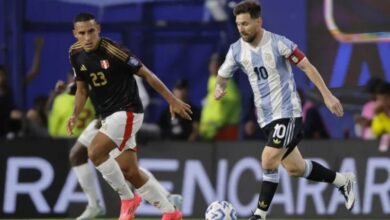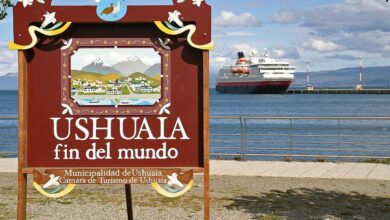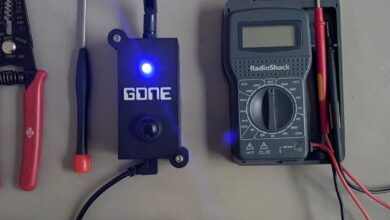Argentina Andes Race Sees Cerebral Palsy Athletes Make Trail History
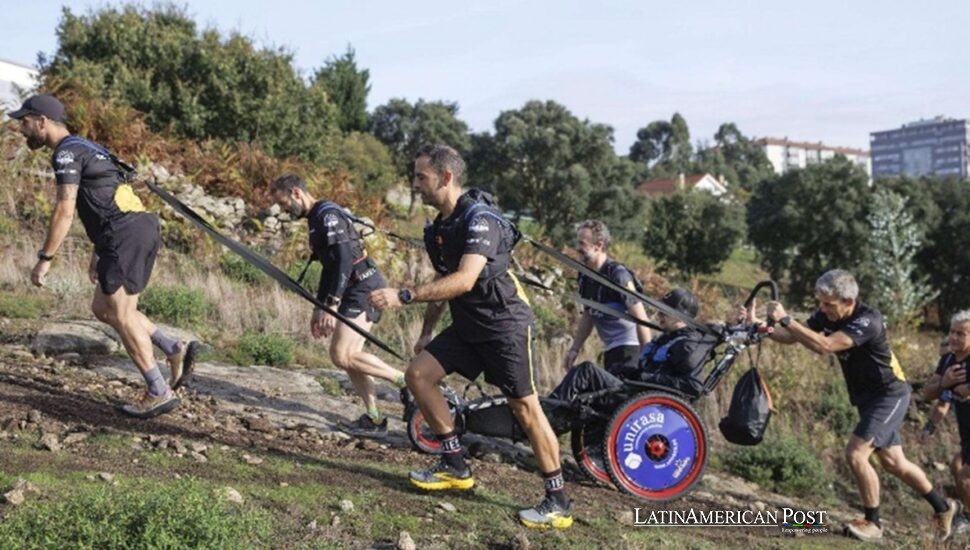
From Spain’s Atlantic coast to Argentina’s mountain spine, the volunteer club Empujando Sonrisas is about to push two adaptive chairs across 100 kilometers of Andean trail—making Mario, 12, and Pedro, 22, the first motor-disabled athletes to take on El Cruce Saucony, EFE reports.
Pushing a Dream Across the Andes
The Galician running club Empujando Sonrisas (Pushing Smiles) was born from stubborn optimism and a father’s love. Later this month, sixteen of its members will fly from A Coruña to Argentina to attempt something no one has ever done: push and pull two young athletes with cerebral palsy across El Cruce Saucony, a three-day, 100-kilometer race through the Andes that lures thousands from around the world.
At the heart of the team are Mario, 12, and Pedro, 22, each riding in a custom mountain chair. “We’re in the last days of training,” said José Luis Fernández, Mario’s father and the club’s co-founder, speaking to EFE as the runners finished their final sessions before their November 27 flight. “It was a crazy idea that started more than a year ago,” he laughed, “but it’s about to become real.”
The plan is simple in concept, brutal in practice: a relay of strength and stamina, runners trading positions to guide the chairs over jagged rock, roots, and snow-dusted passes. The goal is not speed but unity—a finish line reached together, at Mario’s and Pedro’s pace.
Family members and friends will travel alongside, transforming the start line into more of a village migration. “We’re full of excitement,” Fernández told EFE. “It’s not just about sport. It’s about proving that everyone belongs on the mountain.”
Training, Teamwork, and Sponsors Behind the Push
In the year leading up to the race, Empujando Sonrisas trained under Galicia’s winter rain and Atlantic wind, rehearsing every detail of what it takes to move as one organism. They practiced on steep coastal trails—when to brake, when to push, when to switch positions without jolting the riders. They learned to read terrain the way climbers read the sky.
Their resume already looks like a marathon map of perseverance: New York, Porto, Berlin, Barcelona’s half-marathon, and the beloved Behobia–San Sebastián. Those events forged trust. “The Andes will be our statement,” Fernández said.
That statement needed patrons. “Companies like Iberia, Minor Hotels, and the UniRasa insurance brokerage made this dream possible,” he told EFE. Such support was essential; El Cruce Saucony is no neighborhood run but one of South America’s premier endurance races, with 8,000 participants from more than 40 countries.
For months, the club lobbied race organizers to allow adaptive athletes, sharing safety plans and the lessons learned from hundreds of training kilometers. When approval came through, it felt like the door of the Andes swinging open. “Now there’s no turning back,” Fernández said, half a smile, half a sigh of relief.
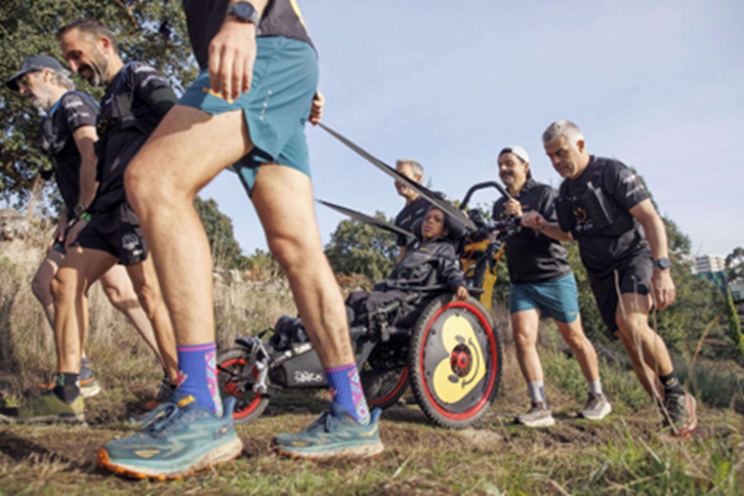
Opening the Trail to Adaptive Athletes
Empujando Sonrisas’ presence in El Cruce isn’t just symbolic; it’s logistical proof that inclusion works when creativity and willpower meet. The club’s mountain chairs are feats of engineering—light, shock-absorbing, and rugged enough to withstand loose gravel and sharp switchbacks.
But their gesture goes beyond the race. “Because we’ll be the first, we want to leave one of the chairs in Argentina,” Fernández told EFE. “So whoever comes after us doesn’t have to worry about getting the equipment.” Each chair costs around €5,000, a steep barrier for most families or local clubs. Leaving one behind is a gift to the next pioneer, a physical invitation to follow.
The meaning is larger than machinery. A chair stationed in the Andes becomes a beacon—a message to race directors, to other athletes, to the kids watching from the sidelines—that accessibility isn’t charity, it’s evolution. “We want to open the way,” Fernández said.
If the team succeeds, they’ll ignite new conversations: how to expand adaptive categories, how to train volunteers safely, how to ensure every future Mario or Pedro can show up ready to roll. Progress in sport, as in life, moves one push at a time.
Leaving a Legacy After the Finish Line
This will not be Empujando Sonrisas’ first feat, but it might be their most cinematic. A film crew will document the crossing—three days of sweat, altitude, and laughter on trails where snow can fall in one valley and blazing sun rules the next. Fernández smiled when asked what he expected to feel at the finish. “It will be beautiful,” he told EFE.
After the race, the group will spend a few days in Buenos Aires, letting their muscles and minds catch up before flying home on December 7. But what they leave behind will outlast any medal: new visibility, new possibilities. Race officials who once hesitated will have seen inclusion in motion; spectators will have cheered two young athletes cresting a ridge once thought impassable.
“There are people in similar situations who may now consider doing it,” Fernández said. “It’s good to have references.”
Empujando Sonrisas runs on that philosophy—the belief that representation is propulsion. Their climbs lift more than chairs; they lift expectations. And when Mario and Pedro roll into the finish surrounded by teammates who refused to accept limits, they’ll etch a new path in the Andes—one that says the future of trail running has room for everyone willing to push.
Somewhere, on a wind-swept trailhead in Patagonia, a gleaming adaptive chair will be waiting for the next dreamer. And it will carry not just a body, but the collective heartbeat of those who proved that when the mountain says no, you can still answer yes—together.
Also Read: Brazil’s Atypical Fans: How Autistic Supporters Are Changing the Game



